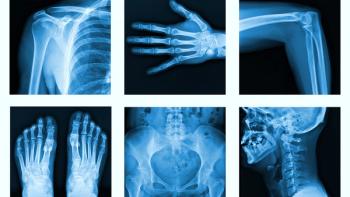
The Role of Disposables in Rapid Response Manufacturing
Single-use technologies can be configured and installed fairly quickly, but are they ready to handle the urgency and scale of a pandemic?
In the event of a pandemic or bioterrorism threat, manufacturing capacity must be reconfigured and deployed for the manufacture of drugs and vaccines to meet the threat. The challenge of how we respond rapidly to a new virulent disease is one that governments and industry continue to address. Investment in this area has been stimulated by two factors: biosecurity issues post-9/11 and the expectation that a major flu pandemic is possible. The recent outbreak of H1N1 is a timely reminder of the need to bring on capacity rapidly; in this case, up to 1 billion doses may be required in a six-month time frame.
Andrew Sinclair
In this two-part article, we look at the role disposable technologies play in rapid response manufacturing. In part 1, we examine exactly what we mean by rapid response and its implications on manufacturing today. Here in part 2, we will look toward the future and how disposables could lead to truly flexible manufacturing platforms. To support this review, we spoke with key stakeholders from both the manufacturing and supplier sides of the industry for their views on the response to H1N1 and the future of disposables in rapid response manufacturing. The people we interviewed included Tibor Nemes, head of the project office at Novartis Vaccines* in Marburg, Germany; Parrish Galliher, founder and chief technology officer at Xcellerex; Guenter Jagschies, director of strategic customer relations, BioTechnologies, GE Healthcare Life Sciences; and the head of worldwide vaccine manufacturing of a leading vaccine manufacturer, who asked that his name not be used.
Miriam Monge
KEY FEATURES OF RAPID RESPONSE
Rapid response to a new disease depends on many factors. Through Biopharm Services' role as process modelers in the US government's Accelerated Manufacture of Pharmaceuticals program (validating the targeted vaccine cost per dose through process modeling and assessing the technical feasibility of moving from gene to bulk drug substance in 12 weeks through dynamic facility simulations), we have defined the following key requirements to develop and manufacture new medicines quickly:
- Process development
- High yield expression system(s)
- Low cost, efficient platforms for downstream processing
- Rapid, high-throughput process development
- High speed, high accuracy analytics
- IT infrastructure and systems
- Effective program/data management
- Automated data management
- Data sharing among all parties (development, manufacturing, and quality)
- Efficient technology transfer
- Scalable plan in place
- Manufacturing
- Fast implementation (i.e., in less than three months)
- Flexible, high performance, single-use manufacturing
- Upstream processing
- Downstream processing
- Facility concept.
The Key Questions
Here, we will focus on the manufacturing requirements. The fundamental question is, How do we rapidly bring on development capacity for the manufacture of a novel drug or vaccine? In the past, governments have put drug stockpiles in place (only useful for known agents, such as anthrax vaccine) or run (or have contractors run) cold or warm facilities, or funded dedicated plants. As facilities become more complex, expensive, and difficult to reconfigure, however, we realize that all of these alternatives are costly and impractical. We wanted to find out if disposable technologies could be a good alternative, and therefore, we asked the following questions:
1. How can disposables help to reconfigure existing manufacturing lines to make a new product? This approach works very well in the response to a flu pandemic because existing flu manufacturing facilities can be quickly reconfigured.
2. How can we use next-generation disposable manufacturing platforms to rapidly re-purpose commercial facilities to meet a critical emergency manufacturing need?
3. What are the possible solutions for countries that don't have manufacturing capacity?
Broadly, we already know that the use of disposable technologies is transforming small-scale manufacturing (Figure 1). However, we wanted to gain insight into the practicalities of the approaches mentioned above. The interviewees provided useful insights into the role disposables play today.
Figure 1. Disposable technologies have transformed small-scale manufacturing.
CURRENT RESPONSE TO H1N1
In the case of the response to H1N1, the situation is not simple. The industry is increasingly able to develop vaccine manufacturing processes quickly, as evidenced by Novartis's June announcement that it had produced its first batch of H1N1 vaccine in cell culture.1 The problems are related to how to rapidly ramp up production, particularly to make a billion doses of vaccine.
Ensuring sufficient supply of disposable components
For facilities that rely heavily on disposables, a key factor in ramping up production is ensuring sufficient supply of disposable components. "The manufacturing capacity of the three major disposables players is still pretty limited, with a small number of facilities worldwide," says the head of vaccine manufacturing at one of the major players. "We have evaluated this in detail." He believes there is a lack of maturity in the major suppliers of disposable components and that they do not pay enough attention to the ability to respond quickly to increased demand.
Novartis manages demand by stockpiling a certain number of fairly standard disposable materials and components, says Tibor Nemes. In their hybrid setup, the disposables they typically use are aseptic connectors and biowelders, bags, tubing, and filters. But even Novartis cannot build up huge quantities of disposables ahead of time. "Inventory has to be based on production needs, so there has to be a balance," he says.
Rapid changeover requires standardized equipment
Another requirement in a pandemic situation is rapid product changeover—adapting an existing facility to a new process. This is an area where disposable technologies have an edge over stainless steel, but Nemes cautions users not to be overly confident on this point. "Rapid implementation of disposables may not be as rapid as we think," he says.
Because there is little standardization of components and assemblies, he explains, new assemblies require lengthy redesign and validation. "If you make a simple change to a bag design, the engineering review at the supplier side can take months," he says. "There is a need for standardization of disposable assemblies if we are to achieve a rapid reconfiguration of a facility."
The head of vaccine manufacture says that the lack of standardized materials is another impediment to rapid response. "The day that the major suppliers really get together and discuss working from a common materials platform, we can talk more seriously about strategic implementation into platforms such as flu," he says.
The Suppliers' Perspective
Many suppliers agree that standardization is needed. "If we want a quick response, habits of processing must change, to move away from customization to standardization," says Gunter Jagschies of GE. "There is no way that any supplier can make a business case out of, for example, customizing disposable columns."
When a disposable device gets complex and when you have to create housings around a functional piece of equipment, the economy that can be achieved from having a disposable solution can be destroyed, Jagschies says. "These routines and dogmas that companies have individually must be replaced with some level of agreement as to what the dimensioning of these devices and columns should be," he says.
Jagschies cited the Akta ready system as an example of standardization that is proving popular in the market place. The changeover time, including hooking up the column and putting liquid into the system, is two hours. "You can use the same standard system for a multitude of processes; traditional equipment needs a full working day," he says.
According to Parrish Galliher of Xcellerex, however, this time saving will only count if the technology is on the critical path. "Xcellerex has addressed the standardization of disposable technologies as far as practically possible at this point in time," says Galliher. "Any vaccine can be made with standard platform plastics. We have developed standard designs which are on a two-week lead time," he says.
"Unfortunately such lead times are not guaranteed on components such as filters, so not all components meet this two-week delivery time," says Galliher. To address this, Xcellerex is putting contracts in place with its major suppliers to ensure they keep a certain amount of inventory of critical components.
COUNTRIES WITH NO MANUFACTURING CAPACITY
Currently, much of the manufacturing capacity for flu vaccines is located in the West, as well as in India and China. So what about countries that do not have capacity in place? "The theory of inserting a facility into different geographic zones just like that and being able to manufacture rapidly is not at all realistic in my opinion," says Nemes, citing the need to consider the regulatory aspects. "We have a pandemic situation now but you must assure GMP compliance and licensure of a facility to protect patients." Therefore, he says, these regions need to build capacity in advance, so that they can switch over rapidly to new products when needed.
For such situations, Galliher says Xcellerex FlexFactory is an option. "The FlexFactory can be delivered to government-funded vaccine research institutions that have the know-how but not the ability to manufacture on a large scale," he says. Such plants would initially be used to manufacture other vaccines with the possibility of changing over quickly in the case of a pandemic. Galliher adds that another key benefit of disposable technology is that it is less complicated to operate. "You can train people more quickly so you don't need as much education because of the reduced complexity," he says.
Jagschies points out that Asian nations have made some good steps toward pandemic preparedness. India hosts the world's largest vaccine manufacturer, the Indian Serum Institute, and some of the smaller Indian contract manufacturing organizations (CMOs) are backed up by large European CMOs. In Korea, there is a CMO (Celltrion) established to Western standards. "If these organizations were to collaborate with the national institutions around preparedness, this infrastructure could be effectively used in a pandemic," he says. "Collaboration between the private sector and government could be possible."
SUMMARY
Disposable technologies are playing a role in the current response to H1N1, but they are not the complete answer. There has been much discussion of disposable technologies' ability to deliver rapid changeover of manufacturing from one product to another, but this is not necessarily easy, given the lack of standardization of disposable technologies. From the logistics perspective, we need to have in place a mature, robust supply chain that can respond to a rapid increase in demand, and we must keep these factories supplied with components and materials required for an emergency. And strategies are required to help countries that don't readily have access to manufacturing capacity so that they can respond to a pandemic.
In this article, we have focused on the general issues around disposables and how they support reponses to a pandemic. In Part 2, we will consider further the future manufacturing challenges based on disposables for rapid response, the options, including the implications, and the industries' 5- to 10-year view on this. Specifically, we will look at what end-users and suppliers of disposable technologies believe needs to be done so that disposable technologies can play a more effective role in rapid response manufacturing.
Andrew Sinclair is the managing director and Miriam Monge is the vice president of marketing and disposables implementation, both at Biopharm Services, Chesham, Bucks, UK, +44 1494 793 243,
* The opinions expressed in this article are solely those of the individual and may not necessarily represent the opinion or position of Novartis.
REFERENCES
1.
Newsletter
Stay at the forefront of biopharmaceutical innovation—subscribe to BioPharm International for expert insights on drug development, manufacturing, compliance, and more.




